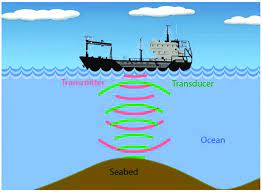Dive into Sonar Technology: An Overview of Principles and Applications

About Course
From the hidden depths of the ocean to the forefront of naval defense, sonar technology plays a vital role in our understanding and interaction with the underwater world. This course invites students on a fascinating journey into the science and engineering behind sonar systems — unveiling how sound waves are used to detect, map, and explore what lies beneath the surface. Whether you’re intrigued by marine life, defense systems, or environmental monitoring, this course offers a perfect blend of physics, technology, and real-world applications.
You’ll begin with the basics—understanding how sonar works and how it evolved from wartime necessity to a multi-disciplinary tool. As you move through the course, you’ll explore the different types of sonar systems, including high-frequency imaging systems and cutting-edge synthetic aperture sonars. You’ll also gain insight into how sonar signals are processed, how environmental factors influence performance, and what the future holds for this dynamic field. With engaging examples, visuals, and practical insights, this course will spark your curiosity and equip you with the foundational knowledge to appreciate or work in sonar-based industries.
Course Content
Introduction
Definition of sonars
00:00Historical development of sonars
00:00Importance of sonars in various fields
00:00